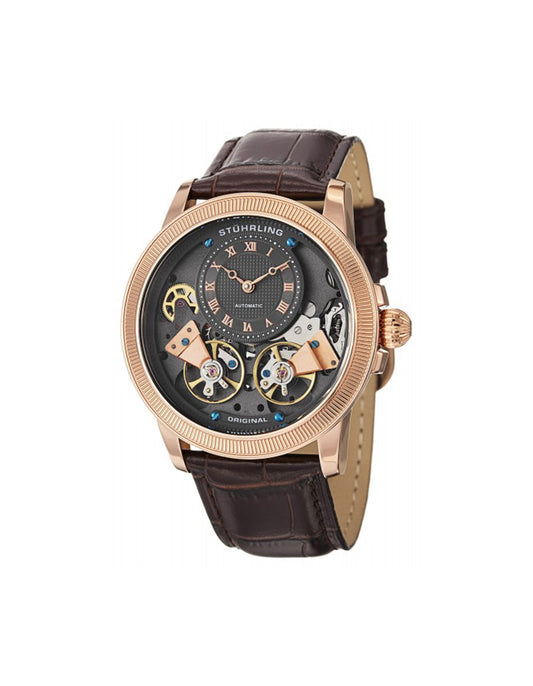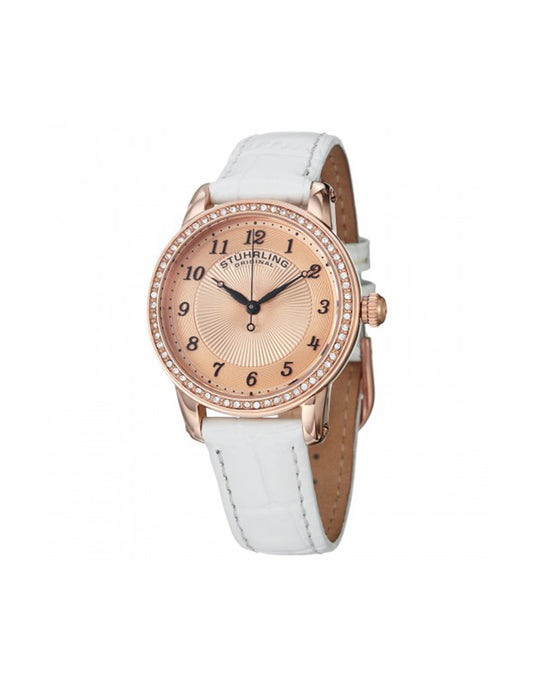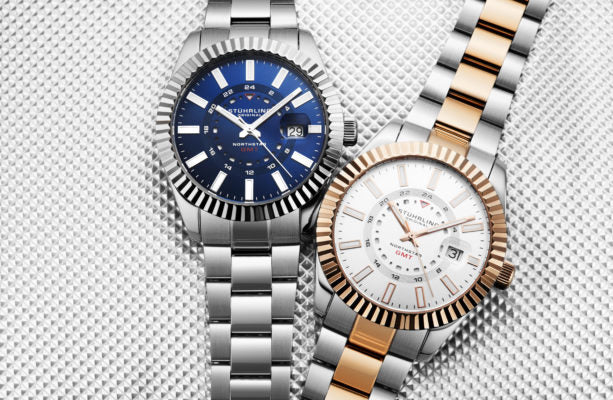The best dual time watches and the best GMT watches have a lot in common—but not everything. Do you know what to look for when choosing a GMT or dual time watch?
FACT: While all GMT watches are dual time, not every dual time watch is capable of offering a GMT feature. TRANSLATION: If you’re traveling and need a way to keep track of both the time at home (since nobody likes a "just checking in" call at 3AM because you thought it was 3PM) and "destination" time (because your vacation clothes look better without a smartphone in your pocket), the watch you want is a dual time—or a GMT with independent second time zone ability.
What Makes a GMT Different From A Second Time Zone?

GMT stands for Greenwich Mean Time—a term associated with 24-hour or "military" time. In addition to their hour, minute, and second hands, true GMT watches have a 4th hand which in conjunction with an exterior or interior bezel (or ring) indicates the time (in hours only) as 1 to 24 instead of 1 to 12. This 4th hand cannot be independently controlled, so using it to track the time in a second location is out. If it’s 11pm on the main dial, the GMT indicator with be pointing to 23. Dual Time GMT’s use a secondary mechanism to independently control the GMT hand which lets the wearer track two zones (in hours only) simultaneously. It's important to remember that the second time zone will always be shown in 24 hour mode. If you want a more traditional way to track two time zones, one that doesn't require you to convert 24-hour military time to AM/PM civilian time, what you want is a classic dual time watch like the Special Reserve 571 , Anatol 371 , Radiant 925 , or 845 to name a few. What makes all these models true dual time watch is the dedicated subdials—complete with their own hour and minute hands—for the second time zone. In fact, the 845 actually has two subdials: one indicating hours and the other minutes, for an overall effect that’s more “sport chrono” than “multi-talented” timepiece. What makes the 571 , 371 and 925 even more amazing is the fact they're true mechanical self-winding timepieces . That means the motion of the wearer causes a rotor to turn, which in turn causes a spring to wind. It’s that spring that powers the movement, which is made of about 300 micro gears, springs, plates, and screws. And it’s that movement that lets the wearer track the time in two different places without ever worrying about batteries or chargers. If that wasn't enough, they also feature a graphic AM/PM indicator that lets you know if it’s night or day (so if that 3AM/3PM phone call still happens, you've got nobody to blame but yourself). Does a dual time zone need a minute hand? For most travel destinations the answer is no—though if your itinerary includes parts of Australia, Afghanistan, or Sri Lanka, be prepared to set the minute hand as the time difference is in both hours and minutes.
WHEN IT'S TIME TO CHOOSE

you’re looking for a " travel watch " and your itinerary is conventional travel destinations, odds are you'll be fine with a GMT that allows for hours-only adjusting (just be sure to remember the AM/PM difference). If your travel tastes are more eclectic, or if you’re more of a "watch purist" who prefers a real timepiece instead of "just a watch," Stührling’s Legacy Collection features a range of options that are also skeletonized and self-winding. This means, aside from not wasting your vacation shopping for watch batteries, you’ll also always have a cool watch to look at—as skeleton movements got their name from allowing the wearer to see the inside of the watch "in action."







